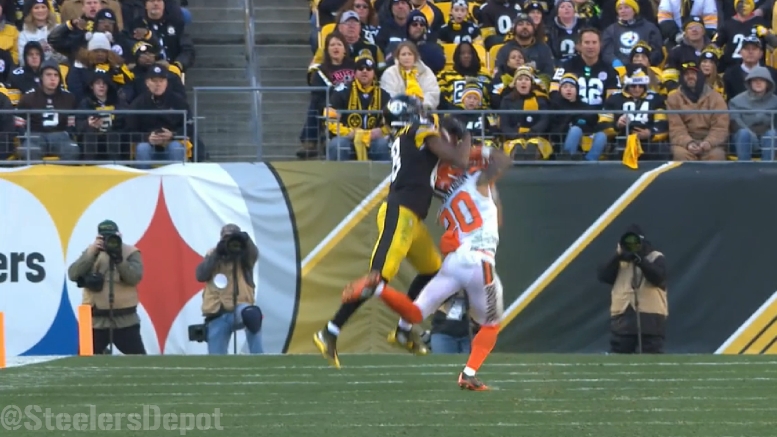The last go route ball that Pittsburgh Steelers wide receiver Darrius Heyward-Bey tried to chase down in 2016 came all the way back on November 6, the first time that the Steelers played the Ravens. In that game, he had his foot rolled up on by the trailing defensive back on an overthrown ball.
The speedster did not return to the field again until Pittsburgh hosted the Ravens on Christmas, but he never ran a route again in 2016. His first snaps back on offense came on New Year’s Day in the regular-season finale against the Browns. He only played on special teams in the previous game.
I have written previously that his return to the offense was arguably the most important development to come out of that ‘meaningless’ game, because the Steelers have lacked a reliable deep target since Sammie Coates went down in Week Five. He caught six passes of 40 yards or more in the first five games, but has only caught two passes for 14 yards since.
Heyward-Bey can, and has, filled that role in the past, and there is good reason that his couple-dozen offensive snaps featured four targets in the passing game, three of which were on deep balls. He caught one of them for 46 yards and set up what was at the time the go-ahead touchdown in the fourth quarter.
Considering the import of the long ball and how that influences how a defense will play a given look, I thought it would be worthwhile to take a look at each of Heyward-Bey’s targets and talk about his performance.
His first target came in the middle of the first quarter on a first-down play. He lined up outside the numbers toward the left sideline with the corner playing eight yards off. While he beat his coverage, the ball was delivered underthrown, forcing him to slow up. He made a valiant effort to fight for the ball in the air, very nearly scooping it with outstretched arms over Jamar Taylor’s head. Coates can learn something from this play.
It was in the direct middle of the second quarter when he was targeted again, this time on third and nine. This, however, was a short target, and with the quarterback under pressure against a blitz, the defender was able to jump the route and smack the ball down. It wasn’t a very subtle route from Heyward-Bey, admittedly.
Late in the half, Landry Jones looked his way again on a deep route, this time working out of the left slot. Heyward-Bey showed on his play that he is not lacking for speed after the foot injury, but unfortunately the ball was poorly placed.
Jones and Heyward-Bey finally hooked up in the middle of the fourth quarter, on the left outside of the numbers. Again, he beat the cornerback, but he still had to slow up and go over the top of the defender’s head to fight for the ball.
Even the threat of an effective vertical target is going to be an important ingredient in the Steelers’ search for balance during their postseason run. That Heyward-Bey was able to show that he can offer that in the final game of the regular season gave that contest free of playoff implications plenty of meaning.










